There are few better ways to experience autumn in Italy than with a trip to its wine regions, visiting vineyards and cantinas, sampling artisanal cheeses and breads, and dining in rustic trattorias overlooking posterworthy landscapes. But Italy has some 140 wine roads (called strade dei vini) to sate most every oenophile’s taste, so how to choose one that’s best for you? Here are five of these amazing routes, ranging from the Veneto and Piedmont in the north to Sicily in the south for you to consider for your next fall getaway
PROSECCO ROUTE
(Strada del Prosecco, Veneto)
While prosecco has become one of Italy’s best known exports in the last decade, its wine road, the first such route designated in Italy, is now generating buzz beyond the country’s borders. Located in a hilly stretch of the Veneto in northeastern Italy, the Prosecco Strada runs from Conegliano (about a 50-minute drive from Venice) to Valdobbiadene, a 33-kilometer route weaving through wine villages and towns and rolling countryside dotted with vineyards, medieval fortresses, family owned cantinas, frescoed churches and castles (one you can stay is the Castel Brando in Cison di Valmerino).
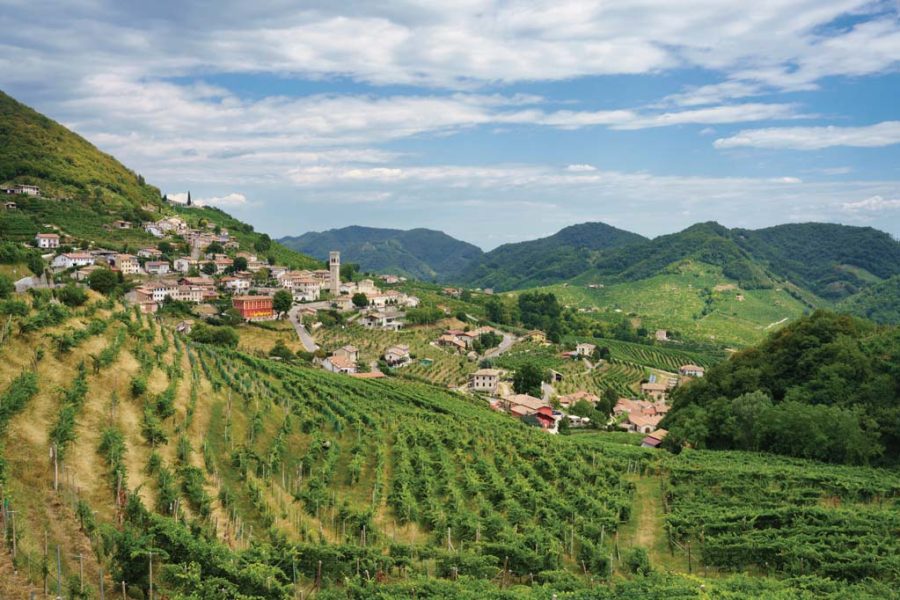
Roads are narrow and winding here so (as in any wine region) designate or have a driver if you’re going to be sampling along the way. On this route you’ll be able to try prosecco in three varieties–sparkling, semi-sparkling and still, the latter called tranquillo. The “grand cru” of prosecco, the DOCG Superiore di Cartizze, comes from the hillsides near Valdobbiadene, specifically a 106-hectare parcel of land that is among the most expensive vineyard terrain in the world.
THE BAROLO ROUTE
(Strada del Barolo e Grande Vini di Langa, Piedmont)
Piedmont produces some of the world’s most renowned wines, among them Barolo, the silky smooth red that’s been dubbed the “king of wines” and the “wine of kings;” and Barbaresco, which like Barolo is made from the Nebbiolo grape. There are routes you can drive that focus not only on visiting renowned cellars and seeing idyllic landscapes but also on the region’s historic art and architecture. One trip that encompasses a bit of everything starts in Alba, a foodie haven known for its white truffles and often called the “capital of the Langhe,” one of the sections of Piedmont (along with Roero and Monferrato) designated a UNESCO World Heritage site for its winemaking traditions.
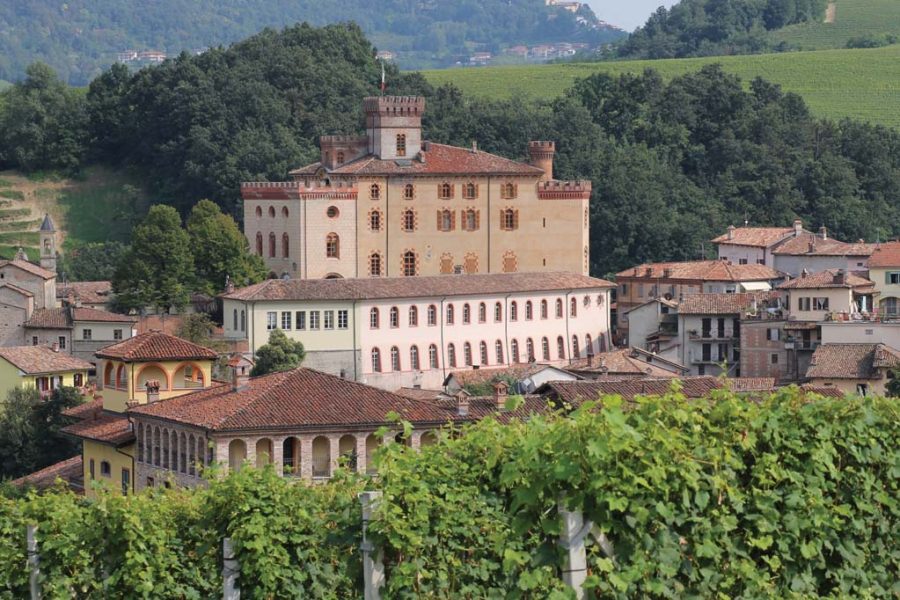
The route then curls through the countryside, down to Roddino and then back up to Castiglione Falletto. On the way you can explore nearby medieval castles (notably at Grinzane Cavour) and have access to Barolo vineyards and cantinas; at La Morra there are walking trails that take you into the heart of wine country. From Castiglione Falletto, the last stop on the route, it’s easy to reach the town of Barolo itself, about 5 kilometers away. You’ll want to arrange tastings of the famous wine at local vineyards (as in other areas, schedule an appointment), and visit the Castello Falletti, which dates from the 10th century. It houses a museum and enoteca where you can also sample some splendid Barolos.
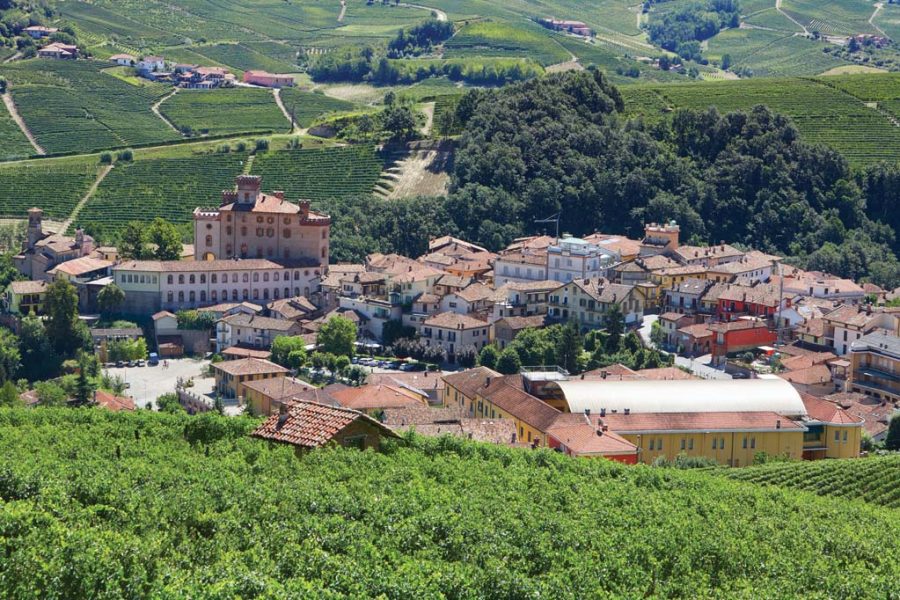
THE ETNA WINE ROUTE
(Strada del Vino dell’Etna, Sicily)
Yes, there are vineyards on the slopes of Mt. Etna, Europe’s largest active volcano, which erupts from time to time, but that hasn’t deterred area wine growers, who produce highly regarded reds, whites and roses from its special terroir. An easy way to navigate the Strada del Vino dell’Etna is by a special wine train departing on Saturdays (for a minimum group of 10, reservations required; private tours can be arranged for smaller groups) from Piedimonte Etneo on the Ferrovia Circumetnea, built in the late 19th century.
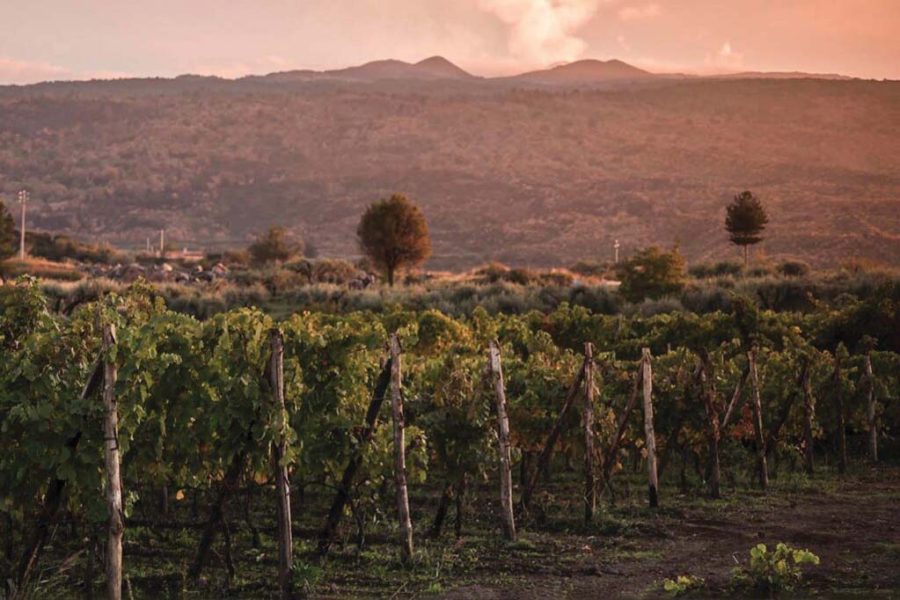
The route (which also includes travel in a dedicated wine bus) weaves through historic towns and past vineyards, citrus farms and farmhouses. Among the many fascinating wineries to visit is the Tenuta Tascante, owned by Tasca d’Almerita, a pioneering Sicilian vintner with four other estates on the island. When in the area sample such Etna specialities as Bronte pistachios, considered the best in Italy- -they’re scrumptious in pistachio gelato and pistachio pestos.
CHIANTI CLASSICO WINE ROUTE
(Strada del Vino e dell’ Olio Chianti Classico, Tuscany)
Perhaps the best known wine road in Italy is the Chiantigiana that threads through the heart of Chianti country, spanning 69 kilometers from Florence to Siena. On this route you’ll come to such famous wine towns as Greve and Castellina, and by traveling nearby roads, to Radda and Gaiole.

Set aside time to visit legendary wineries like Marchesi Antinori in Bargino (19 kilometers from Greve), which helped pioneer the development of Super Tuscans; Badia a Coltibuono (6 km from Gaiole), a gracious wine estate with cooking classes and lodging; and the Ricasoli family’s Castello di Brolio (11 km from Gaiole), the oldest winery in Italy. The castle can be visited and the property includes an Italian country-style farmhouse for vacation stays.
THE ETRUSCAN ROMAN WINE ROUTE
(Strada dei Vini Etrusco Romana, Umbria)
Although the ancients Greeks brought grape varieties and winemaking methods to Sicily, the Etruscans upped the game, teaching the Romans how to better produce the elixir that has been a part of daily life on the peninsula for thousands of years. You can travel through Umbrian towns and villages settled by the Etruscans and Romans if you follow the Strada dei Vini Etrusco Romana from Orvieto to Narni (roughly 63 kilometers), where you’ll find an assortment of vineyards producing top Umbrian wines, like the Orvieto and Rosso Orvietano DOCs.
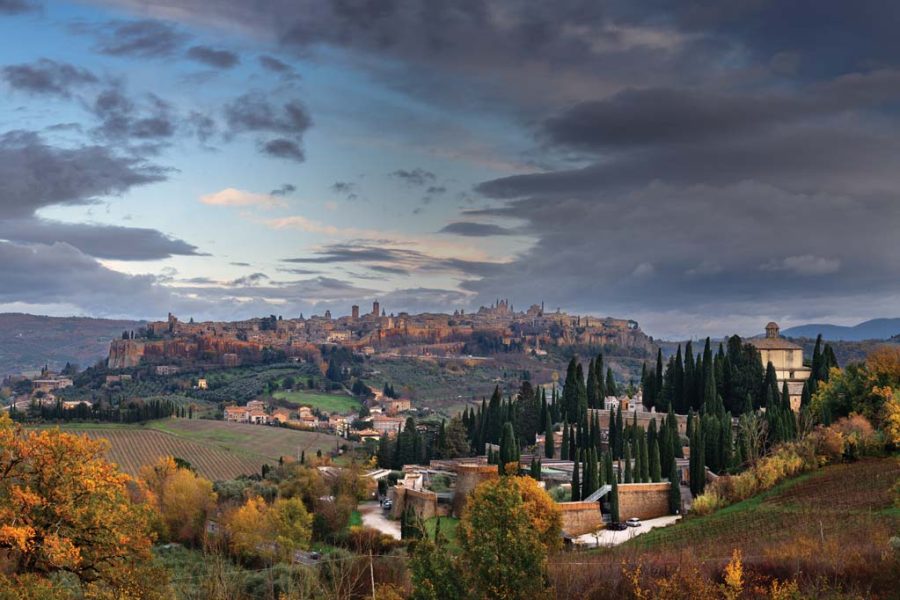
Be sure to set aside time to visit the historic town of Orvieto, once a major Etruscan center and known for its Gothic-style Duomo, which dazzles with an elaborately carved marble facade. Another stop on the route is Amelia, on a beautiful hillside setting overlooking the Tiber, and famous for its polygonal-style stone walls believed to have been built by the Etruscans. At the end of this route you’ll be in Narni, a medieval hill town with a subterranean section (Narni Sotterranea), home to a 12th-century church with rare frescoes. While traveling this area, be sure to sample regional pastas like stringozzi with asparagus, or in season, tagliatelle with truffles, and bistecca Chianina, a luscious steak from the region’s white cows.